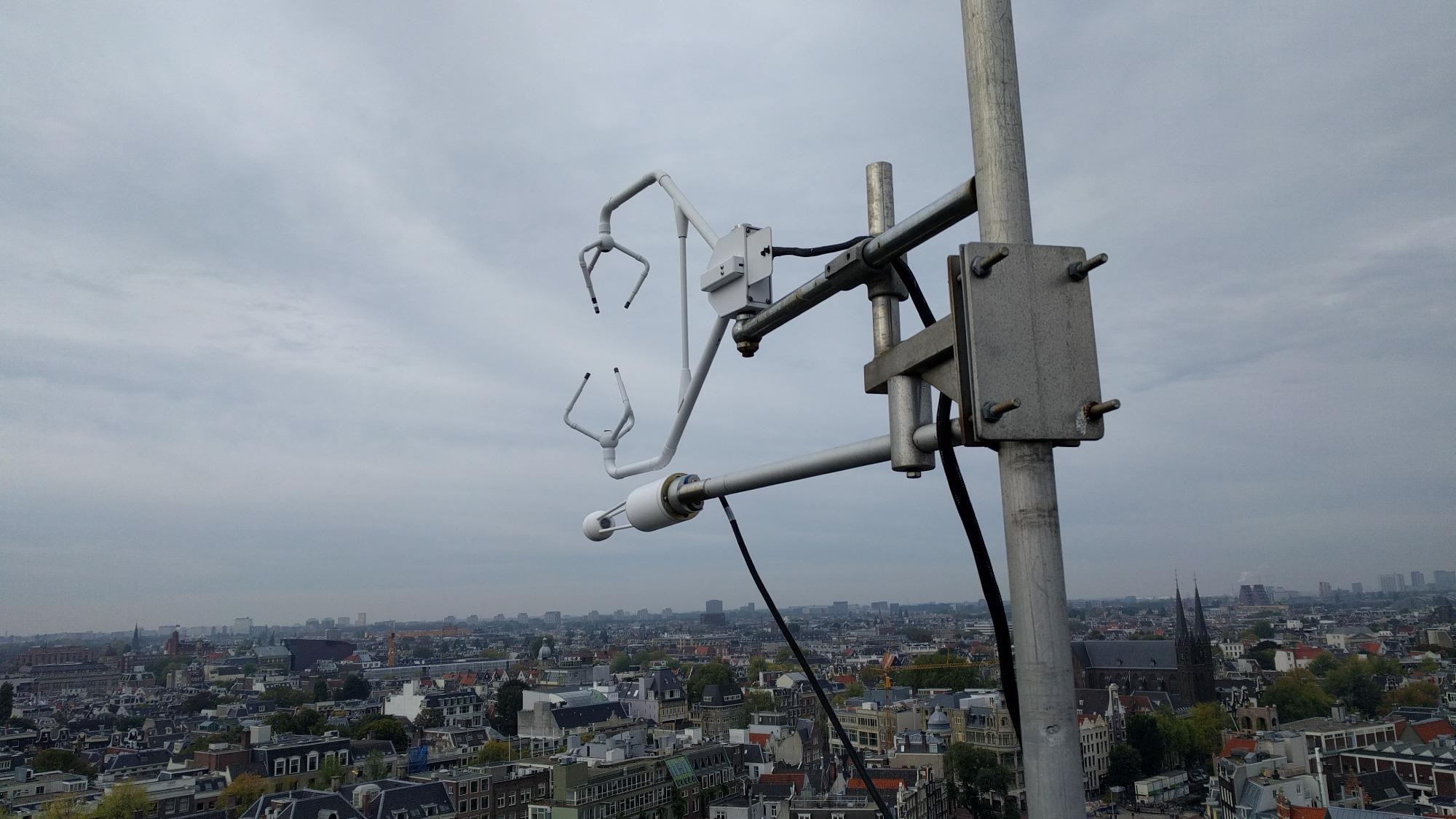Reviewed by Alex SmithMay 10 2022
Under the guidance of researchers, two international studies recently performed across Europe have stressed the crucial role that human behavior will play when it comes to reducing CO2 emissions.
 The measuring location on top of the NH Collection Amsterdam Flower Market Hotel in Amsterdam. Image Credit: Bert Heusinkveld.
The measuring location on top of the NH Collection Amsterdam Flower Market Hotel in Amsterdam. Image Credit: Bert Heusinkveld.
In Amsterdam, the COVID-19 lockdown was helpful in reducing the emissions to 40%, and they stayed surprisingly low following the lifting of restrictions. Hence, both studies are highly appropriate in light of the energy transition required to conform to the Paris climate agreement.
Since COVID-19 initially hit Europe in the spring of 2020, the majority of the countries, such as The Netherlands, came up with strict measures to restrict the virus’s spread. In cities, there was a complete halt to human economic activity and transport almost immediately, and many people had to shift their work from offices to homes.
The first recently reported study in the journal Science of the Total Environment by Giacomo Nicolini et al. has displayed that those urban emissions decreased by 5% to 87% throughout 11 cities and 13 measurement sites in comparison to the same period in previous years.
Measurements that were considered as part of the Amsterdam Atmospheric Monitoring Supersite (AAMS) highlighted the fact that emissions decreased by 40% at the time of the lockdown. But to their surprise, they remained around 30% lower for four months following the lockdown before they started to increase again.
Measurements From the Top of a Hotel
This study was started and headed by other researchers from ICOS, the Integrated Carbon Observation System that produces greenhouse gas data in Europe. Wageningen University & Research and AMS Institute contributed to this study with CO2 flux observations at a tower at the NH Collection Amsterdam Flower Market Hotel in Amsterdam. This tower quantifies the CO2 emissions from the inner city of Amsterdam.
Amsterdam was among the four cities where emissions remained low even after the strict restrictions were lifted. However, the areas observed in these cities are characterized by a large number of tourists, which dropped down significantly during the pandemic.
Dr. Gert-Jan Steeneveld, Meteorology and Air Quality Chair Group, Wageningen University & Research
Tracking Regional Emission Reductions for the First Time
The second recent study published in Science Advances headed by Dr. Pickers at the University of East Anglia, and with contributions from Wageningen University & Research, also showed COVID-19 lockdown CO2 emission reductions of 23% at the regional level in the United Kingdom (UK).
While the first study concentrates on urban areas, with restricted exchange with the vegetation, this second method integrates CO2 and oxygen measurements to isolate the CO2 signal into fossil combustion and the vegetation contributions. This is not possible by making use of just CO2 measurements.
Our results show the importance of the use of atmospheric measurements of O2 in deriving the fossil fuel CO2 signal, which is otherwise lost in the large natural variability of the CO2 signal of the vegetation.
Dr. Ingrid Luijkx, Wageningen University & Research
Initially, this new technique enables the tracking of emission reductions at the regional level in near real-time depending on atmospheric observations. Hence, it is independent of bookkeeping techniques based on energy statistics.
Emissions in Tourist Cities Rebounded the Slowest
The primary cause for the decreased CO2 emissions in all cities was the reduction of vehicular traffic caused a result of the limitations on mobility. This describes why residential areas noticed the rapid rebound in emissions even after the restrictions were lifted.
The four cities with emissions gradually reverting back to the pre-COVID-levels were — besides Amsterdam — London in the United Kingdom, Vienna in Austria, and Heraklion in Greece.
To efficiently reduce climate change, the scientists came to the conclusion that there has to be a greater systemic change in the ecosystems of the cities and the lifestyles of people. Just like the COVID-19 lockdown revealed, variations in human behavior have a direct, instant and considerable effect on urban CO2 emissions.
It is vital to independently verify whether pledged emission reductions complement bottom-up reporting of national emission estimates, stressing the significance of long-term atmospheric observational programs like those utilized in both studies.
Journal Reference:
Pickers, P. A., et al. (2022) Novel quantification of regional fossil fuel CO2 reductions during COVID-19 lockdowns using atmospheric oxygen measurements. Science Advances. doi.org/10.1126/sciadv.abl9250.